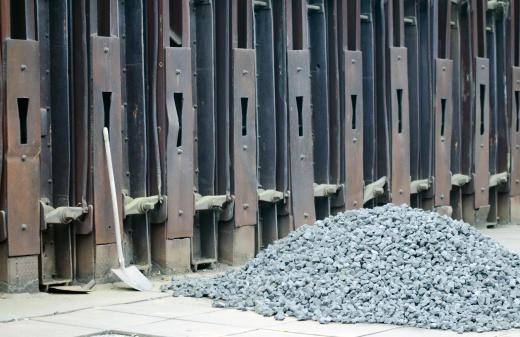The Hunter process is a metallurgy process used to purify titanium; it was very successful until the 1940s, when the process lost its popularity to the less expensive Kroll process. To start the Hunter process, coke, titanium dioxide and chlorine must be collected and heated. After this, sodium is added and the mixture is heated again. When the sodium and titanium are heated together, the product is nearly pure titanium. While this process is rarely used in the early 21st century, it laid the foundation for all other titanium purifying procedures.
Three elements are needed to begin the Hunter process. They are titanium dioxide, coke and chlorine. Heat is applied to the three so a chemical reaction occurs that creates titanium tetrachloride. In this reaction, titanium dioxide and chlorine mix together, and coke is needed as a carbon source to help create this reaction.

While titanium tetrachloride is closer in purity to pure titanium than titanium dioxide, it still is far from being the pure metal. After the initial reaction, sodium is added to the titanium tetrachloride and the two are heated to about 1,472° Fahrenheit (800° Celsius). This enables the sodium to work on the titanium tetrachloride to enable a reaction.
After the metal cools, the element left is nearly pure titanium. The average grade is about 99.9 percent pure, which by many standards is considered pure. This occurs because the heated sodium is able to wipe away the other elements attached to the titanium tetrachloride, leaving only the titanium itself.
When titanium was first discovered, it could not be used as a pure substance for a very important reason: It was never pure. Like many other elements, titanium is almost always attached to other elements, and it was too attached to these other elements to be useful. The Hunter process marked the first time pure titanium could be produced, and it was able to inspire many similar procedures to create similar results.
One major problem with the Hunter process is that it is relatively expensive, especially when compared to the next most popularly used titanium purification method, the Kroll process. While the Hunter method is rarely used, it is considered one of the best methods for extracting titanium, so it still finds some use. It primarily is used when a manufacturer needs to extract the most titanium possible or the titanium is bound with too many other elements to be properly purified by any other method.
